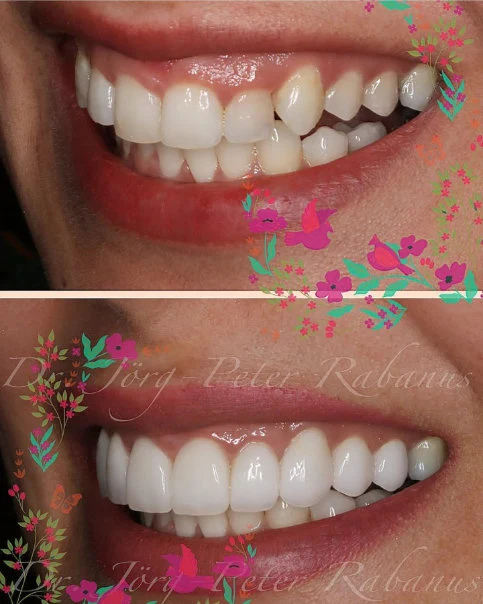A Brief History of Porcelain Veneers and Their Contemporary Ramifications
Porcelain veneers, celebrated as a cornerstone of modern cosmetic dentistry, have a fascinating history that traces back over a century. Their journey from rudimentary beginnings to state-of-the-art smile makeovers reflects the evolution of dental science and artistry.
The Early Days
Porcelain veneers were first introduced in 1903 through an article in Dental Cosmos. Initially conceptualized as a dental innovation to enhance aesthetics, these early veneers were rudimentary and lacked the durability we see today. By the late 1930s, veneers became more prominent, especially in Hollywood, where actors sought temporary aesthetic modifications for their upper front teeth. These early iterations were secured using dental adhesives, but they were far from permanent. Veneers served as cosmetic aids for fleeting glamour rather than long-term dental solutions.
Choosing an AACD-accredited dentist ensures you’re working with a leader in cosmetic dentistry. These professionals offer specialized knowledge, applications, and skills to enhance your smile, from simple tooth-colored fillings to porcelain veneers and more.

The Rise of Modern Veneers
The trajectory of porcelain veneers changed dramatically in the late 20th and early 21st centuries. Innovations in adhesive materials and techniques made them a practical and durable solution for various dental issues. Newer veneer porcelains offered enhanced strength and aesthetics, leading to a surge in their popularity over the last two decades.
Today, porcelain veneers are used to address a spectrum of dental conditions, such as minor tooth misalignment, enamel defects, gaps (diastemas), and discoloration. Their unparalleled ability to mimic the natural appearance of teeth makes them the gold standard in smile makeovers.
Contemporary Applications and Success Stories
Modern porcelain veneers are a transformative tool for both patients and dentists. Consider the case of a patient with severely worn teeth who had long sought a smile makeover. After researching and consulting an experienced cosmetic dentist, the patient underwent a comprehensive evaluation. The solution went beyond placing veneers—it included rehabilitating the chewing surface to ensure harmony with the jaw's natural movements. Such cases underscore the meticulous planning and expertise required to achieve functional and aesthetic success with veneers.
When designed and executed correctly, veneers offer results that no other dental material can replicate. Their predictability and aesthetic appeal depend heavily on the dentist’s skill, experience, and approach to smile design.
Expertise and Accreditation
Finding a qualified cosmetic dentist for veneer placement is crucial. The American Academy of Cosmetic Dentistry (AACD) serves as a benchmark for expertise in the field. Of its approximately 6,000 members, only about 490 have achieved the rigorous accreditation that signifies a commitment to cutting-edge techniques and clinical excellence. While no dentist can claim universal expertise, AACD accreditation is a reliable indicator of a practitioner’s dedication to mastering cosmetic dentistry.
The Science Behind the Bond
The success of porcelain veneers hinges on advanced bonding techniques. Modern veneers are bonded to the tooth structure using etched and silanated porcelain combined with resin cement. Studies confirm that this bond provides exceptional strength and resistance to fracture. In fact, the adhesion is so robust that, in cases of trauma, the tooth itself may fracture before the bond between the veneer and the tooth fails.
Limitations and Considerations
Despite their many benefits, veneers are not suitable for everyone. Patients with bruxism (teeth grinding) or large pre-existing restorations may not be ideal candidates. Additionally, achieving optimal results requires careful assessment and collaboration between the dentist and patient to ensure that veneers align with functional needs and aesthetic goals.
A Revolution in Dental Artistry
Porcelain veneers symbolize the perfect blend of science and art in dentistry. Advances in materials and techniques have made it possible to adhere dissimilar materials, such as porcelain and tooth enamel, seamlessly. This evolution has not only enhanced the durability of veneers but also broadened their applicability, allowing dental professionals to cater to diverse needs and expectations.
Conclusion
From their origins in early 20th-century Hollywood to their status as a premier cosmetic solution, porcelain veneers have undergone remarkable development. Today, they are more than just a cosmetic enhancement; they represent a sophisticated approach to improving both dental function and aesthetics. With proper expertise and application, porcelain veneers continue to transform smiles and lives, solidifying their place as an essential tool in modern dentistry.



